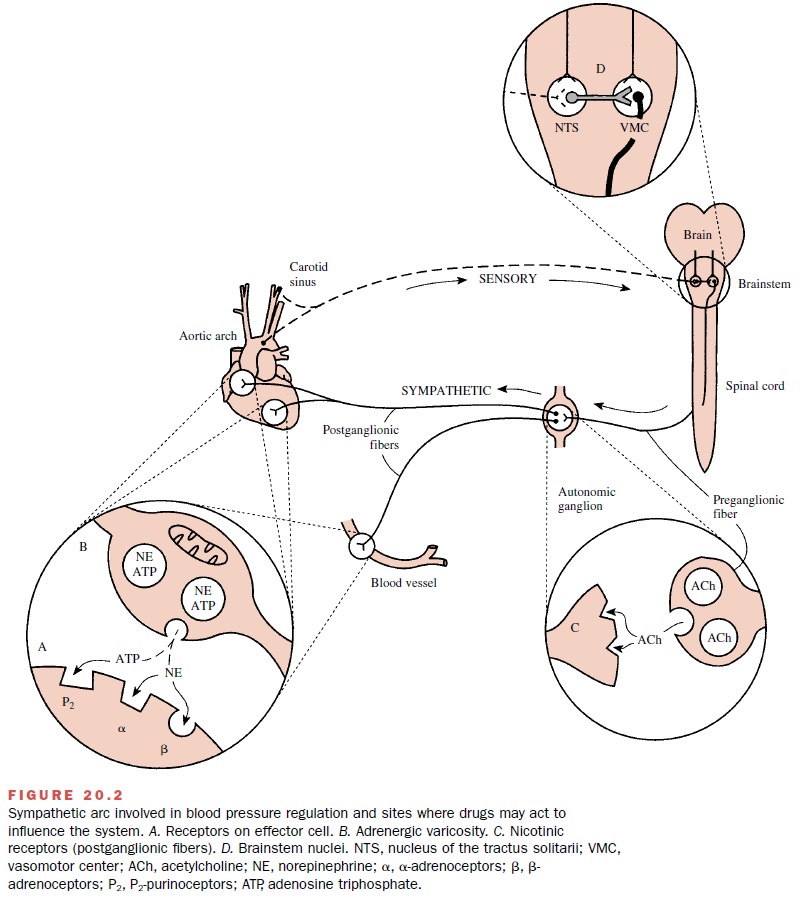Chapter: Modern Pharmacology with Clinical Applications: Antihypertensive Drugs
Ganglionic Blocking Agents
GANGLIONIC BLOCKING
AGENTS
The basis for the
antihypertensive activity of the gan-glionic blockers lies in their ability to
block transmis-sion through autonomic ganglia (Fig. 20.2C). This ac-tion, which results in a decrease in the number of
impulses passing down the postganglionic
sympathetic (and parasympathetic) nerves, decreases vascular tone, cardiac
output, and blood pressure. These drugs
prevent the interaction of
acetylcholine (the transmitter of the preganglionic autonomic nerves) with the
nicotinic re-ceptors on postsynaptic neuronal membranes of both the sympathetic
and parasympathetic nervous systems.

The ganglionic blocking
agents are extremely potent antihypertensive agents and can reduce blood
pressure regardless of the extent of hypertension. Unfortunately, blockade of
transmission in both the sympathetic and parasympathetic systems produces
numerous untoward responses, including marked postural hypotension, blurred
vision, and dryness of mouth, constipation, par-alytic ileus, urinary
retention, and impotence. Owing to the frequency and severity of these side
effects and to the development of other powerful antihypertensive agents, the
ganglionic blocking agents are rarely used.
The orally effective
ganglionic blocking agents in fact are not recommended for the treatment of
primary hy-pertension. However, certain intravenous preparations, such as the
short-acting agent trimethaphan camsylate (Arfonad),
are used occasionally for hypertensive emer-gencies and in surgical procedures
in which hypotension is desirable to reduce the possibility of hemorrhage.
Related Topics